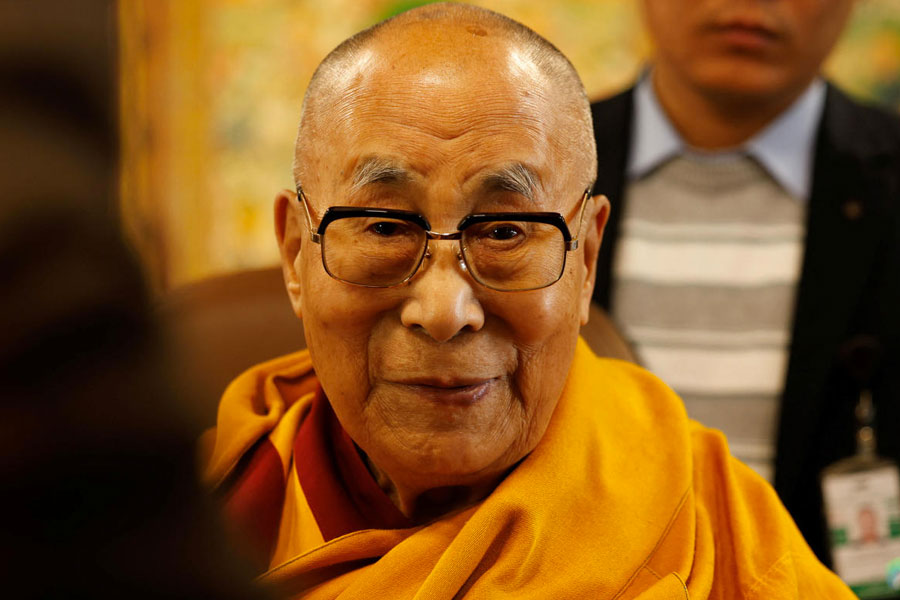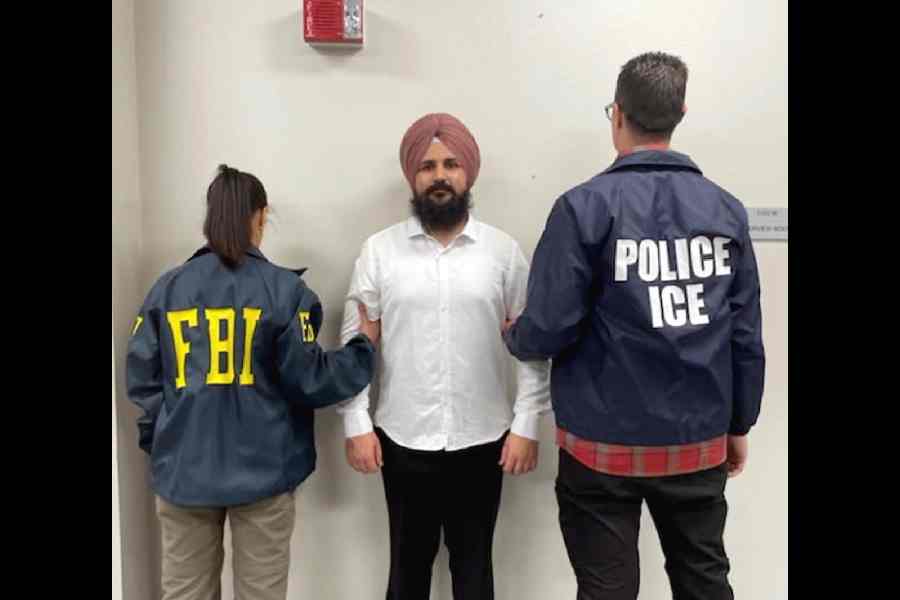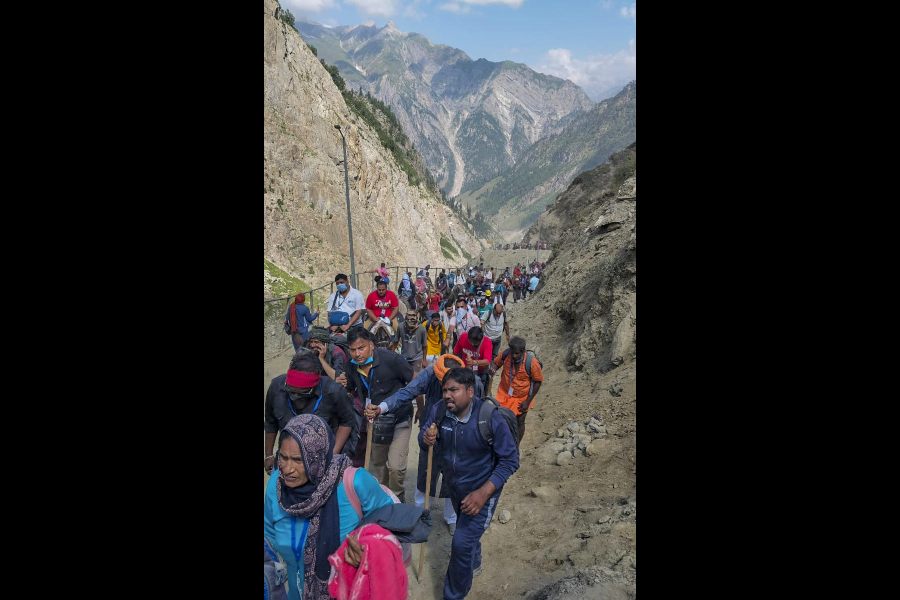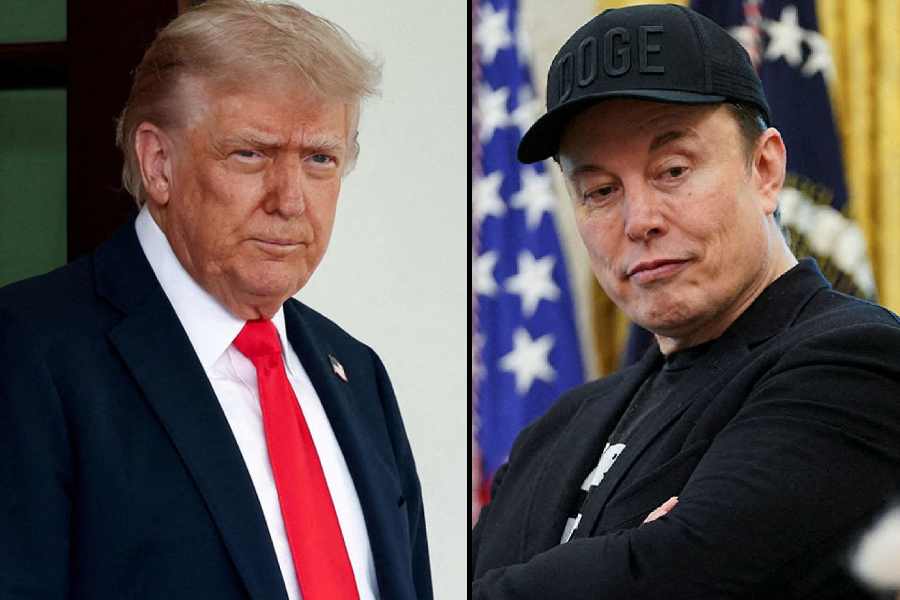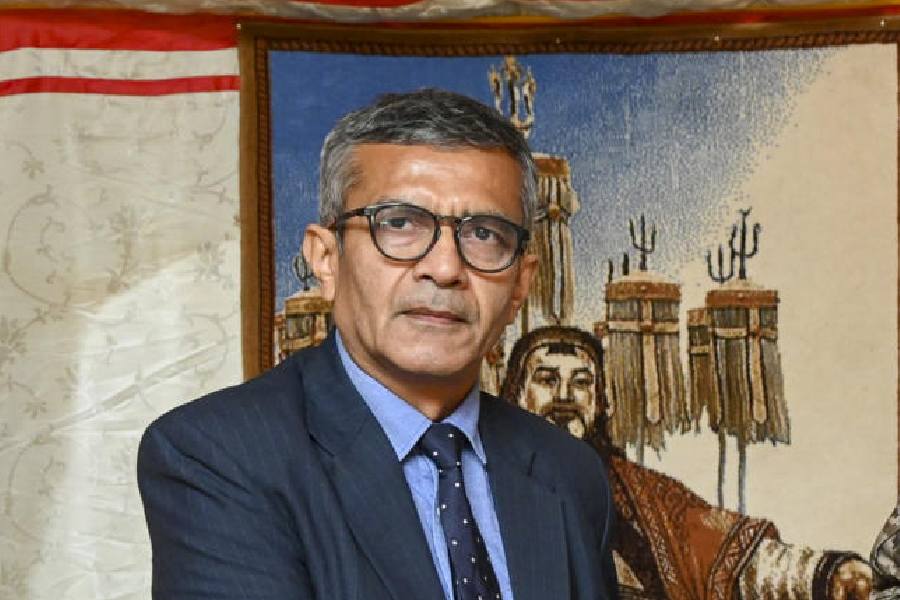ON TOP OF THE WORLD

Pictures by Anup Bhattacharya

When news reached his hometown Leh that he had climbed the Everest, the reaction of his neighbours and acquaintances was: "So what? Everyone here goes to the mountains to graze sheep."
Fifty years later, in Calcutta on Tuesday, Sonam Wangyal was surrounded by autograph hunters who had gathered to listen to stories of the 1965 Indian Everest expedition.
Wangyal, 74, was the youngest in the 19-member team that reached the highest point on the earth in 1965.
He was one of the four members of the team who recounted the climb at a programme organised by the Indian Mountaineering Foundation's east zone committee, in association with The Himalayan Club, Calcutta, and The Telegraph at the Indian Museum on Tuesday.
Wangyal took the full-house audience to the top of the world in his 22-minute speech.
The members of the 1965 expedition, organised by the Indian Mountaineering Foundation with grants from the Centre, had started their journey from Jaynagar in Bihar on February 25.
After arriving at Namche Bazar in Nepal, the group proceeded to Thyangboche at 13,000ft, and then to the Khumbu glacier.
They negotiated the icefall, trudged across the Western Cwm, climbed the Lhotse Face and Geneva Spur on their way to the summit.
The leader of the expedition, Captain (retired) M.S. Kohli, had decided to attempt the peak on April 27 but the weather had forced the team back to the base camp.
Wangyal recounted how the wind, blowing at 140km per hour, had forced them to retreat from Camp VI to the base camp and how, at times, they had to do without bottled oxygen.
When the weather improved, the summit party comprising Captain (retired) A.S. Cheema and Nawang Gombu moved up to the South Col again and pitched tents at 27,930ft.
Two days later, on May 22, Sonam Gyatso and Sonam Wangyal made it to the top. They were followed by C.P. Vohra and Ang Kami on May 26 and H.P.S. Ahluwalia, Harsh Rawat and Phu Dorji on May 29.
Of the 19 mountaineers, some of whom were part of the unsuccessful Indian attempts on the Everest in 1960 and 1962, nine are alive. Among them three have scaled the peak.
Expedition leader Kohli, who was also part of the 1960 and 1962 teams, said: "In 1965, we had pushed up our camp closer to the summit because at that altitude every foot counts, considering the weather and shortage of oxygen. We had missed the summit in 1962 by 100m."
The other team members who attended Tuesday's programme were G.S. Bhangu, who was in charge of communication, and Brigadier (retired) Mulk Raj, who was part of the support team.
Wangyal explained how every inch of the route they took had to be opened by the team. Sherpas do the work for most teams now.
"We would have to open routes, fix ropes and ladders, and also ferry materials. Those who climb Everest now only have to breathe and remain alive.... From Jaynagar to the base camp we had to trek but now mountaineers fly to Lukla and sherpas open the routes for them," Wangyal said.
"Mountaineering has to be done of one's own will and determination and one has to try to learn from climbing. It's not of much use if one is climbing with the support of others."
Wangyal recounted, leaving the audience in splits, how he had "applied Vicks (ointment) on Gyatso's frostbite.... Dr A.K. Chakravarti (one of the expedition doctors) told me I was mad... but how do I know, I wasn't a doctor or a compounder".
Kohli attributed the summiteers' success to support provided by all those who were not in the summit team.
"One of them present here, Mulk Raj, played a tremendous role on the South Col and higher reaches... and there were two doctors and two wireless operators," he said.
A Films Division documentary on the expedition was screened at the programme.






